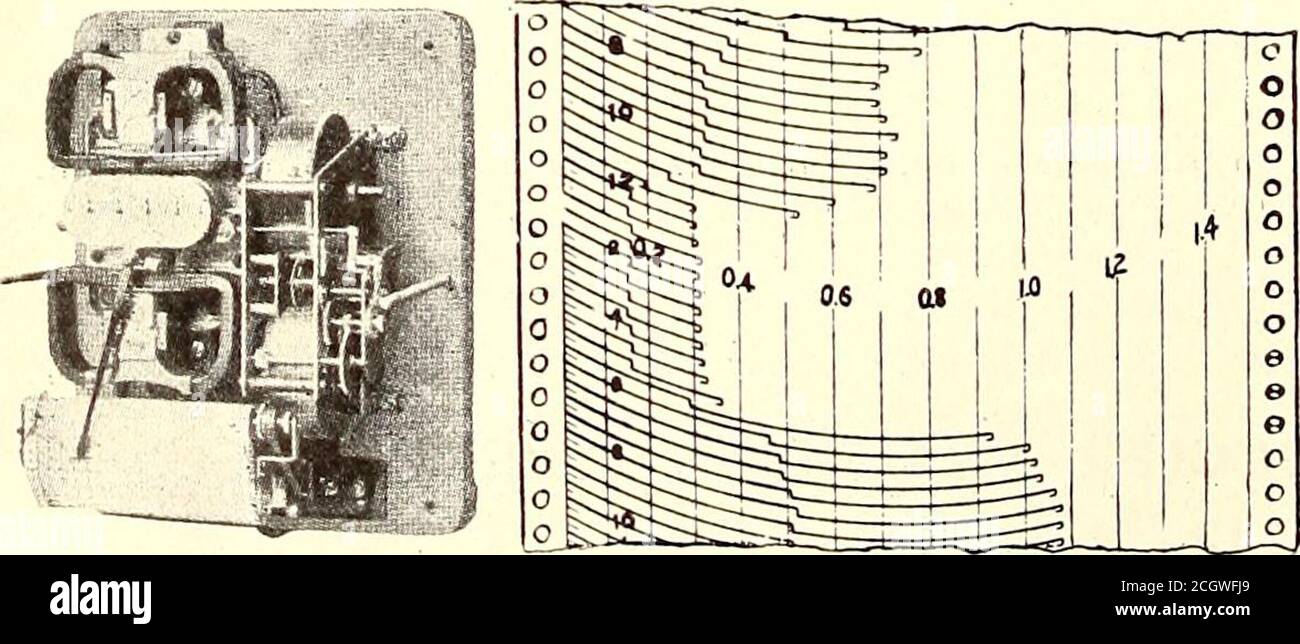. Electric railway journal . bolt angle bars and drive-fitbolts are used. While we are unable at this time to give any data onthe real worth of this construction since we have hadit in use less than a year, yet we feel that this methodwill at least be effective in keeping water out of thejoints. Recording-Demand Watt-Hour Meter In order to avoid having the commercial peak load oc-cur simultaneously with the railway peak on railwaysselling large amounts of energy, it is often desirable tofix the rates according to the time of occurrence, theduration and the amount of the maximum demand. Todeter

Image details
Contributor:
Reading Room 2020 / Alamy Stock PhotoImage ID:
2CGWFJ9File size:
7.2 MB (366.4 KB Compressed download)Releases:
Model - no | Property - noDo I need a release?Dimensions:
2421 x 1033 px | 41 x 17.5 cm | 16.1 x 6.9 inches | 150dpiMore information:
This image is a public domain image, which means either that copyright has expired in the image or the copyright holder has waived their copyright. Alamy charges you a fee for access to the high resolution copy of the image.
This image could have imperfections as it’s either historical or reportage.
. Electric railway journal . bolt angle bars and drive-fitbolts are used. While we are unable at this time to give any data onthe real worth of this construction since we have hadit in use less than a year, yet we feel that this methodwill at least be effective in keeping water out of thejoints. Recording-Demand Watt-Hour Meter In order to avoid having the commercial peak load oc-cur simultaneously with the railway peak on railwaysselling large amounts of energy, it is often desirable tofix the rates according to the time of occurrence, theduration and the amount of the maximum demand. Todetermine these factors a meter has been developedwhich indicates on a four-counter dial the total kilowatt-hours consumed, and records on a paper strip the totalenergy used over successive predetermined time inter-vals. The instrument is installed as an ordinary watt-ihour meter and requires no additional apparatus orwiring. Under load the gear train of the watt-hour meter ad-vances the counter in the regular manner. At the same. RECORDING-DEMAND WATT-HOUR METER AND SAMPLE OFRECORD MADE time the ink-carrying pen is caused to advance acrossthe record paper in proportion to the energy used. Atthe end of a predetermined time interval a stud on areset wheel releases the pen gear from mesh with thegear train and a balancing weight returns the pen tozero, where it is again meshed with the gear train to repeat its advance during the next time interval. Anoperating spring controlled by the clock causes therecord paper to advance 1/16 in. every fifteen minutes.Thus if the meter is arranged to record the demand atfifteen-minute intervals, the paper advances just beforethe pen is reset so that the pen makes a distinct andreadily-observed record at the maximum point of itstravel. This shows both the amount of the energy usedduring the interval and, by the time calibrations printedon the record paper, the time of its occurrence. The meter is the product of the Westinghouse Elec-tric & Manufactu